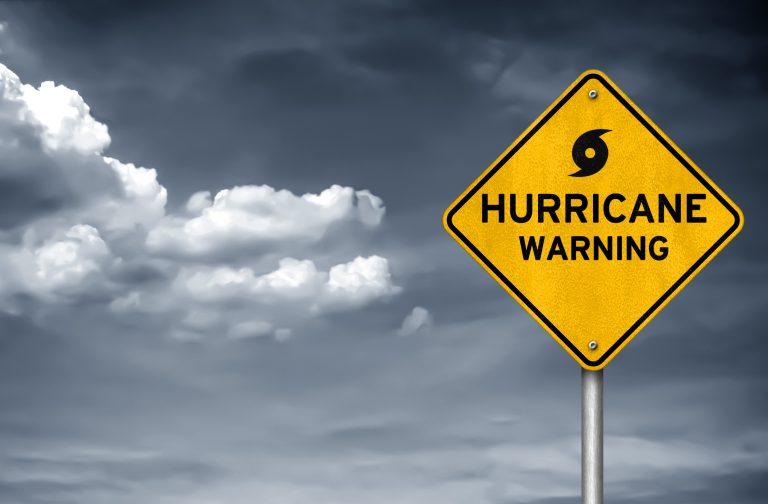TALLAHASSEE, Fla. – As insurance companies, utility companies and emergency management officials prepare for the coming months, experts continue to predict a very active hurricane season for Florida and other areas along the Atlantic and Gulf Coasts.
Echoing its previous forecast for the storm season that begins June 1, the National Oceanic and Atmospheric Administration on Thursday pointed to warming ocean temperatures and predicted up to 25 named storms would form, with up to 13 of those expected to reach hurricane strength and four to seven bringing Category 3 or stronger winds.
Mark Uhl, warning coordination meteorologist at the National Weather Service’s Tallahassee office, said the latest forecasts don’t predict the storm’s path or potential landfall, but they remain reliable.
“All the conditions are right: we still have record warm waters like we had last year in the tropical Atlantic, and we no longer have[the weather pattern known as]El Niño,” Uhl said. “In fact, having an El Niño during hurricane season is good for the wind shear in the tropical Atlantic.”
Officials are also increasingly concerned about the frequency of storms intensifying rapidly, leaving less time for people to prepare and evacuate.
“The science behind climate change is not that we’re going to see more tropical cyclones on average, but we are going to see more major hurricanes, more Category 4 and 5 hurricanes,” Uhl added. “And this increased rapid intensification is going to become more frequent.”
The six-month storm season officially begins June 1, but the disturbance that formed off the eastern tip of Cuba on Thursday had a low chance of growing into the year’s first named storm.
State Emergency Management Agency Director Kevin Guthrie acknowledged the possibility of a “very intense hurricane season” last month, saying “one of the things we do best is respond to hurricanes.”
Guthrie said the department is preparing for up to five storms to hit the state and will rely “much more” than in past years on contractors to provide pre- and post-storm materials.
“For example, we used to have five logistics providers, now we have 12,” Guthrie said. “It’s all in preparation for the upcoming season.”
Florida State University climatologist David Zielden said the prediction of a busy season wasn’t a surprise given ocean temperatures.
“The latest analysis that I’ve seen says that sea surface temperatures in key development areas are currently as warm as a normal mid-August,” Zierden told reporters on May 16. “That’s what we’re seeing. Sea surface temperatures in this region were record high last year, and they’re going to exceed those temperatures even further as we go into this year’s hurricane season.”
NOAA’s Thursday forecast was similar to that of Colorado State University’s Department of Atmospheric Sciences, which predicted 23 named storms and 11 hurricanes.
Meanwhile, experts at the University of Pennsylvania’s School of Arts and Sciences predict an astonishing 33 named storms.
Private weather company AccuWeather warned Wednesday that severe storms with wind speeds of 35 mph or more were possible within 24 hours.
“Over the past few years, we’ve seen numerous instances where this threshold has been exceeded, with some seeing increases of 40, 50 and even 60 mph in a 24-hour period,” AccuWeather chief hurricane forecaster Alex DaSilva said in a prepared statement.
One example is Hurricane Ian in 2022. Ian went from a Category 3 hurricane with winds of 120 mph to a Category 5 with winds of 160 mph in just 24 hours before hitting Southwest Florida as a devastating Category 4 storm.
The 2023 season was the fourth most active on record with 20 named storms, including seven that reached hurricane strength and three major storms. In late August, Hurricane Idalia made landfall in Taylor County as a Category 3 storm before battering rural North Florida.
From 1991 to 2020, the Atlantic Ocean experienced an average of 14.4 storms per year, of which an average of 7.2 reached hurricane strength.
Florida Power & Light Co. President and CEO Armando Pimentel told state Public Utilities Commission members on Tuesday that the company needs to prepare for a storm that could intensify quickly because “we can no longer be comfortable with a Category 1 staying a Category 1.”
“That wasn’t the case 20 years ago,” Pimentel said, “and it’s probably just a series of coincidences that have happened in the last few years. But we need to be very prepared.”
Pimentel said Hurricane Idalia’s maximum sustained winds increased by 55 mph in the 24 hours before landfall.
“We’re seeing a Category 1 storm rise to a Category 3, almost a Category 4. That’s significant,” Pimentel said. “That’s what I’m saying. The waters are warm again this year. We’re all aware of that as we prepare for this year.”
Changes such as laws strengthening insurers and support for reinsurers are helping the property insurance market, Patricia Vaughn, a professor of risk management and insurance at Florida State University, told reporters on May 16. Heading into hurricane season, Floridians can get insurance through private insurers or the state’s Citizens Property Insurance Corporation, Vaughn said.
“So from a societal perspective, it’s good to know that going into the season, there’s not a huge disparity among those who are uninsured,” Vaughn said.
But Born warned that the state continues to face a storm that could affect homeowners’ insurance premiums. The problem, he added, is weathering the period until the law is fully implemented.
“I’m pretty optimistic that one storm isn’t going to kill us. If we get two or three storms, that might be a little bit of a problem,” Vaughn said. “If we get two or three hurricanes this season, that’s when we’re going to have some concerns.”
© 2024 The News Service of Florida. All rights reserved.

